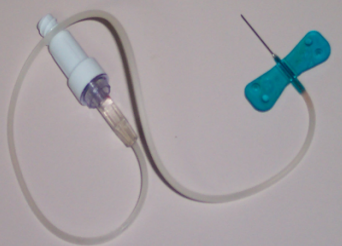Top 20 Audiologist Interview Questions
1) What tools does Audiology use?
Audiologist use tools like
• Otoscope
• Typanometer
• Audiometer
• Auditory brainstem response
• Electronystagmography
• Otoacoustic emission, etc..
2) List out important part of ears?
• Auditory canal
• Cochlea
• Malleous
• Incus
• Stapes
• Semicircular canal
• Auditory nerve
• Estachian tube
• Oval window
• Eardrum
3) Explain what is the cochlea in the ear?
Cochlea plays a major role in hearing phenomena; it contains fluid called perilymph and tiny hairlike projections called cilia. Together they do the function of converting sound waves into a nerve impulse interpreted by the brain as sound.
4) Explain what is ASSR (Auditory Steady State Response)?
It is a testing method used to check the ability of hearing in children, who are too young for traditional audiometric testing.
5) Explain what is sensorineural hearing losses?
Hearing losses that are caused by a problem in the inner ear or along the auditory nerve are called sensorineural hearing losses. It happens due to the inability of the nerve to carry the signal to the brain.

6) Can we cure sensorineural hearing impairment? What causes such hearing impairment?
Such type of hearing impairment are incurable and can be remediated to a certain extent. Although new technology has shown immense potential to improve hearing ability, is still far to eliminate hearing impairment completely.
• Damage to the cochlear hair cells
• Tumor on the auditory nerve
7) Explain what is conductive hearing losses? What causes such hearing impairment?
Hearing loss that is caused by a problem in the middle or external ear are called conductive hearing losses. Such difficulty in hearing occurs when problem lies in the conduction of sound to the cochlea.
The cause of such impairment is
• Excessive wax in the ear canal
• Fluid accumulated in the ear due to infection
• Discontinuity between the ossicles
8) What are the parameters or levels on which hearing disability is measured?
• 0-25 dB – Hearing with normal limits
• 26-40 dB – Mild hearing loss
• 41-55 dB – Moderate hearing loss
• 56-70 dB – Moderately severe hearing loss
• 71-90 dB – Severe hearing loss
• 91+ dB – Profound hearing loss
9) Explain what is electrochleography test?
Electrochleography is an inner ear test that uses sound stimulation and the resulting electrical measurements. In this technique, fluid pressure inside inner ear is measured, excessive fluid pressure may cause hearing loss.
10) Explain how fluid pressure inside ear can be measured?
Two important components are used to measure the fluid pressure in the ear; one is summating potential (SP) and the action plan (AP). The audiologist collects several responses from the ear in the waveform with the help of electrochelograph, which contains these two components ( SP & AP). Both of these waveform components are direct results of providing sound stimulation to the cochlea. The calculation is made on the SP/AP ratio, and any increase in the value of this SP/AP ratio indicates an increase in fluid pressure in the ear.
11) Explain what “Otoacoustic emissions” (OAE) is?
“Otoacoustic” emissions are low level, inaudible sounds produced by the outer hair cells of the inner ear. This sound occurs spontaneously or in response to clicks or tones. OAE is normally observed in the normal person but may be absent if the person has mild conductive or cochlear hearing loss.
12) List out some of the use of OAE (Otoacoustic Emissions) testing?
• Screening tool for hearing loss in infants, children and newborns
• Determines non-organic or functional hearing loss
• Differential diagnosis between retro-cochlear and cochlear hearing loss
• Identifying cochlear function in patients with tinnitus
• Can give an early indication about cochlear dysfunction
• Can use to evaluate the toxicity of the medication used for ear
13) Why sometimes we feel a ringing or hizzing sound in the ear?
Hizzing or ringing sound is very normal, and it’s not a serious condition. It is referred as tinnitus, which is not a condition itself but a symptom of an underlying condition due to age-related hearing loss, ear injury or a circulatory system disorder.
14) What are the types of tinnitus?
Tinnitus are classified in two
• Pulsatile: It is caused due to muscle movement near the ear, blood flow problem in neck or face, changes in the ear canal.
• Non-pulsatile: It is caused due to the nerves involved with hearing, you may hear the sound in both ears.
15) What triggers tinnitus?
• A buildup of earwax
• Taking too much of antibiotics
• Intake of too much of alcohol
• Eardrum rupture
• Dental or Temporomandibular problems
• Direct injuries to ear or head
• Injury to the ear due to radiation therapy
• Excessive dieting and weight loss
• Repeated exercise with the neck
• High blood pressure, Migraine, Multiple Sclerosis, Neurological disorder, etc.
16) List out different types of hearing aids that are popular among people?
The types of hearing aids that is popular are
• Completely in canal (CTC)
• In the canal (ITC)
• Half shell in the ear (ITE)
• Full shell in the ear (ITE)
• Traditional behind the ear (BTE)
• Open fit behind the ear (BTE)
17) What all sectors an audiologist can work?
An audiologist is a health professional, and he can work in sectors like
• Hospitals
• Clinics
• Private practices
• ENT offices
• Universities
• Government Institute
• Military Hospitals
18) Explain what CAPD is and what are the tests used to check CAPD?
CAPD stands for central auditory processing order, and it is a set of problems that occur in different types of listening tasks, especially observed among children’s. To check CAPD various test are performed like
• Auditory brainstem response
• Middle Latencies
• Late latency
• Event-related response
• fMRI
19) Explain what is Audiogram?
An audiogram is a graphic demonstration of audiometric data. It represents a picture of your hearing ability. It is a graph that represents the softest sound a person can hear at different pitches or frequencies.
20) Who can receive Cochlear implant?
Adults who are having
• Severe or profound bilateral hearing loss
• No help from a hearing aid
• Health enough to go under surgery
• Have realistic expectations






